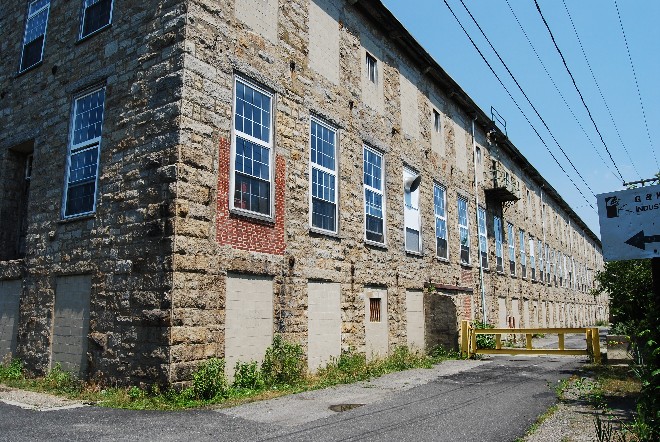- Fall River Bleachery
Infobox_nrhp | name =Fall River Bleachery
nrhp_type =

caption =
location=Fall River, Massachusetts
lat_degrees = 41
lat_minutes = 40
lat_seconds = 19
lat_direction = N
long_degrees = 71
long_minutes = 8
long_seconds = 44
long_direction = W
locmapin = Massachusetts
area =
built =1872
architect= Paine,Walter J.; Multiple
architecture=
added =February 16 ,1983
governing_body = Local
mpsub=Fall River MRA
refnum=83000667cite web|url=http://www.nr.nps.gov/|title=National Register Information System|date=2008-04-15|work=National Register of Historic Places|publisher=National Park Service]Fall River Bleachery is a historic textile bleachery on Jefferson Street in
Fall River, Massachusetts .The bleachery was built in 1872 and added to the National Historic Register in 1983.
Historical Background
The primary product of most of the mills in Fall River was cotton print cloth. Much of it was printed at the American Print Works, which was one of the largest such companies in the
United States . The best printing results are obtained from pure white cloth. During the period between 1870 and 1872, the city of Fall River grew rapidly, adding dozens of new mills during this time.By 1872, Spencer Borden, the son of Jefferson Borden, had become trained chemist and had travelled to Europe to study the process of bleaching and dyeing textiles. On his return trip to the
United States , he gathered a group of mill owners, including ones inNew Bedford andRhode Island to discuss the idea of establishing a large-scale bleachery in the area. A committee was formed to locate a suitable site. They tested the quality of the water supply in several areas in Fall River, Somerset, Tiverton, and as far north as Bridgewater. It was finally decided to locate the new bleachery at the mouth of Sucker Brook, where it flowed into South Watuppa Pond, in the southeast corner of the city of Fall River. The Sucker Brook is fed by Stafford Pond, a spring-fed water body in nearbyTiverton, Rhode Island . Its water was exceptionally pure with a high flow rate.The bleachery mills were soon constructed from native
Fall River granite found on the site. The factory was designed so that the water from the brook could flow through the facility without the need for pumping. Jefferson Borden was chosen as the first president of the company, which had a capacity to process up to thirteen tons of cotton annually.The site would later be expanded to keep up with demand from the many area mills. [ [http://www.sailsinc.org/durfee/earl5.pdf Earle, 1877, p 147] ]
ee also
*
List of Registered Historic Places in Fall River, Massachusetts
*List of mills in Fall River, Massachusetts References
Wikimedia Foundation. 2010.
